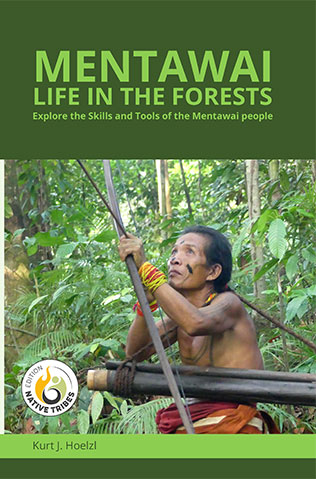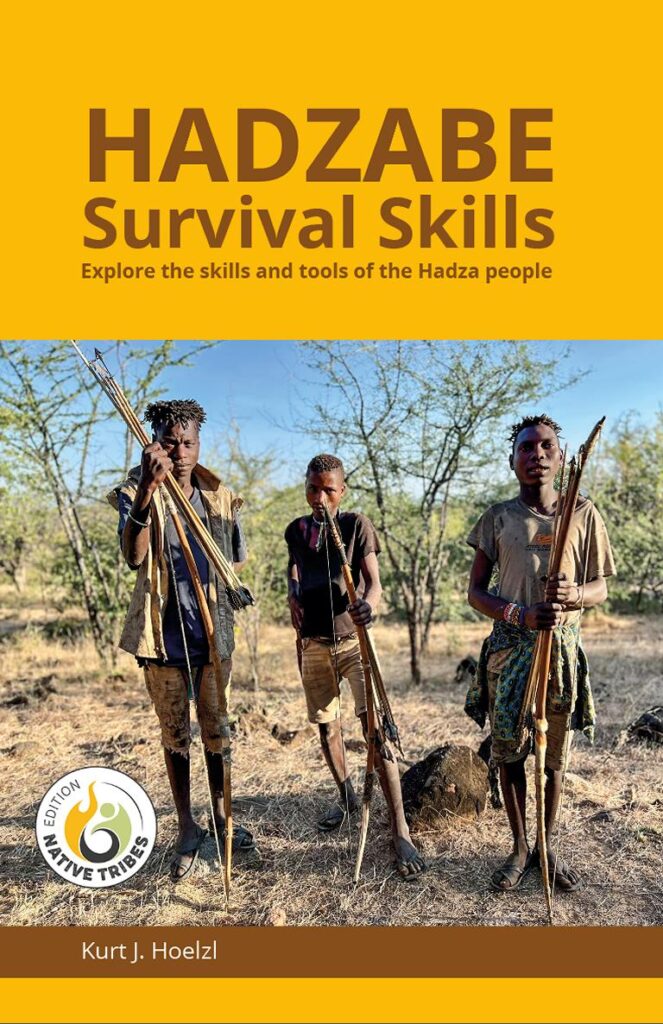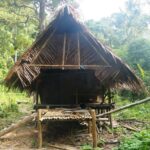Traditional Hadza camps are loose affiliations of relatives, in-laws, and friends. Each camp has a few core members, but most others come and go as they please. If there are conflicts, the feuding parties will resolve them by simply separating into different camps. Hadza camps are traditionally named after senior males, but this honor does not confer any particular power, as the Hadza recognize no official leaders. Individual autonomy is the hallmark of the Hadza. No Hadza adult has authority over any other.
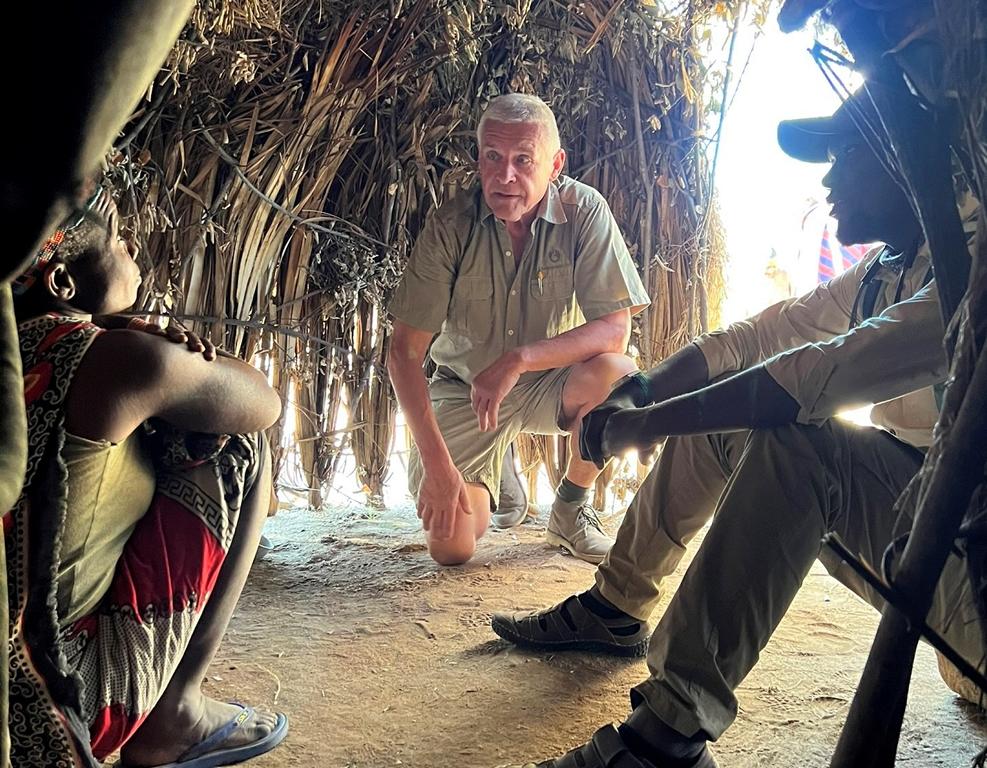
Preferred locations of Hadza camps
There are two seasons in the life of a Hadza. The rainy season is from November to April, and the hot and dry season is from May to October. September and October are the hottest and driest months. Hadza will build their huts near a reliable water source during these two months. Often, they will build the huts for the dry season in May and abandon them around November, at the onset of the small rainy season.
During the dry season, the Hadza prefer to sleep in the open – outside the huts – beside a campfire. Two to six people sleep at a fire, and various fires spread around a common area. The sleep groupings are various: families, single men, young women, and couples. People sleep whenever they want. Some stay up much of the night and doze during the day’s heat.
In the rainy season, the main determinant of the location of Hadza camps is a protected area against rain and winds and nearby hunting and foraging grounds. Therefore, they move during this time to more rocky, mountainous areas.
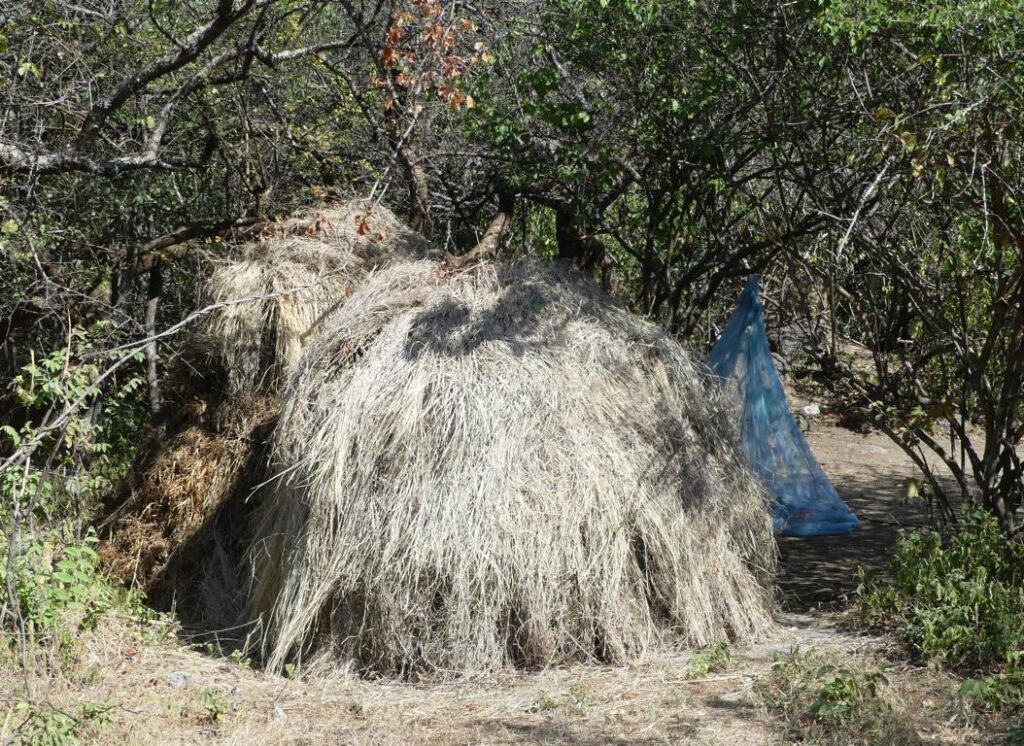
When leaving a campsite and the old huts, Hadza people only take the thatching grass. This is regarded as the most valuable part of the hut, as good thatching grass is challenging to find. The remaining lattice framework will rot and be eaten up by termites quickly. When returning to an old campsite, new huts will be built.
How many huts are in the Hadza camps?
About 6 – 8 families typically build grass huts about 100 – 200 meters/yards apart. They are only connected by trotted paths and communal areas. These are a stone plate for smashing Baobab seeds, a playground for children, and others.
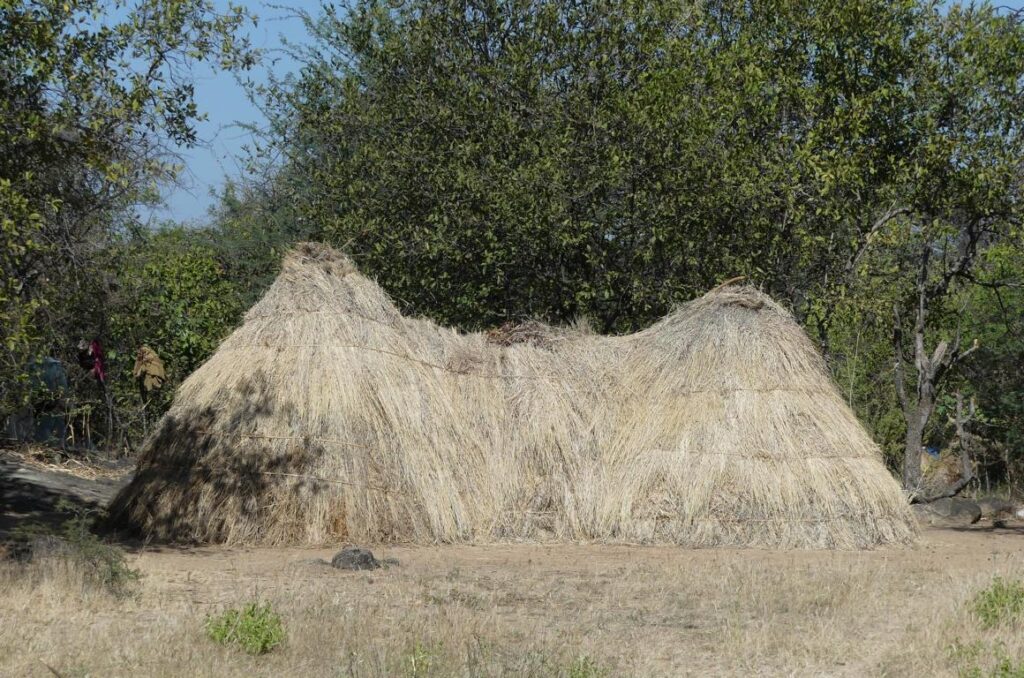
Huts are only temporary shelters that give people privacy and protect them against the weather. A hut has no emotional value for the Hadza people. It has just a place for mentioned functions, and every Hadza prefers to sleep outside anyway. The used huts we were seeing were about two months old.
Building a hut in case of marriages
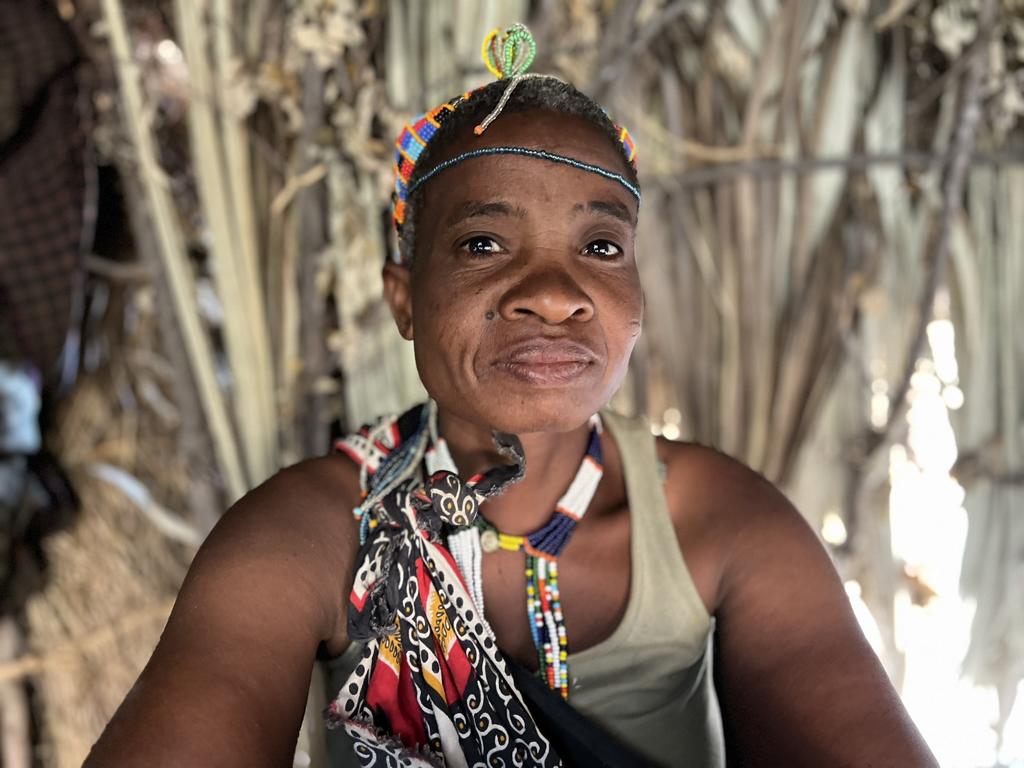
If the mothers of initiated boys and girls become aware that a boy and a girl like each other, they interact. If they think it is a good fit, they erect a hut for the newly formed couple. One mother puts a half-circular main frame pole into the ground, and the other places one 90 degrees to the first. This way, building a new hut starts, and the young couple has its place and is regarded as married.
Hadza hut design and structure
There are two basic hut designs: a half-round, or ‘Up-turned bird nest design,’ and a conical, or ‘Tipee’ design. It is unclear when a half-round or a conical design is used because I saw both designs in various combinations. When we call something in this article a ‘hut’, it means a single hut or more single huts connected to one hut structure.
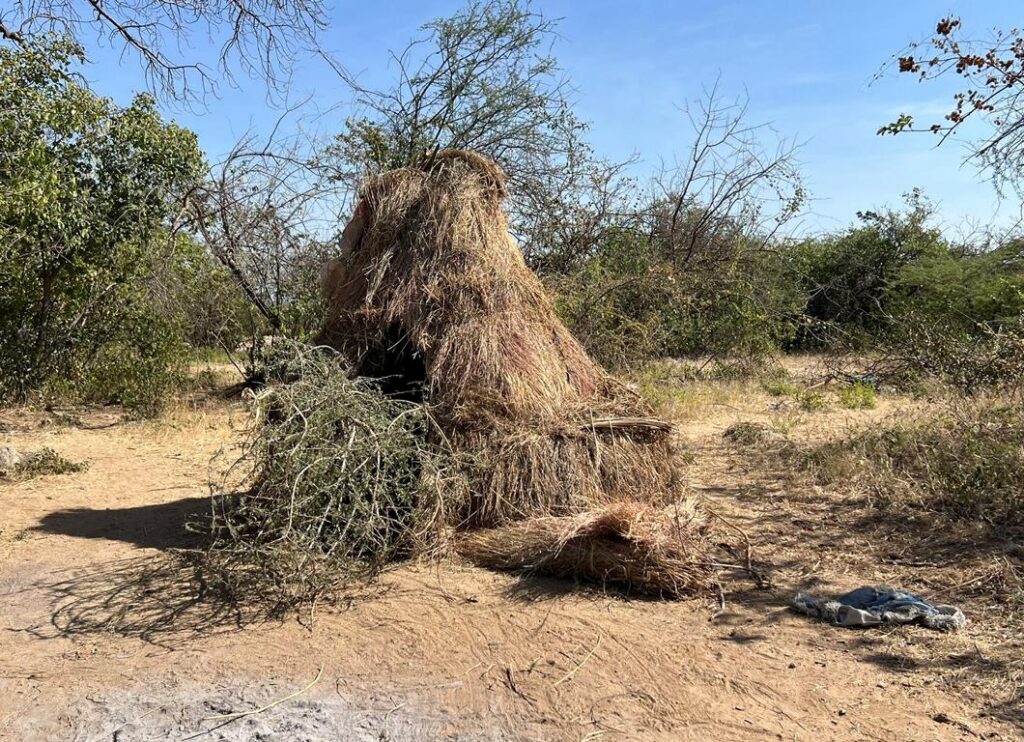
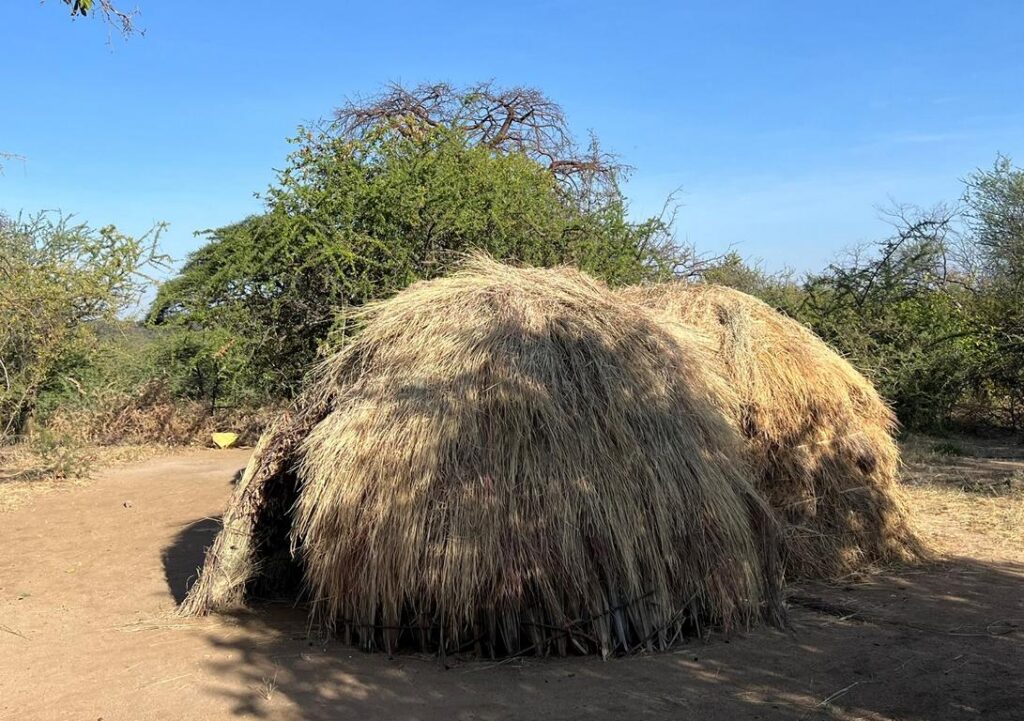
A family usually lives in a hut structure consisting of a single hut on the front side for cooking and sitting. Tightly connected to the frontal hut is a second hut for sleeping in privacy.
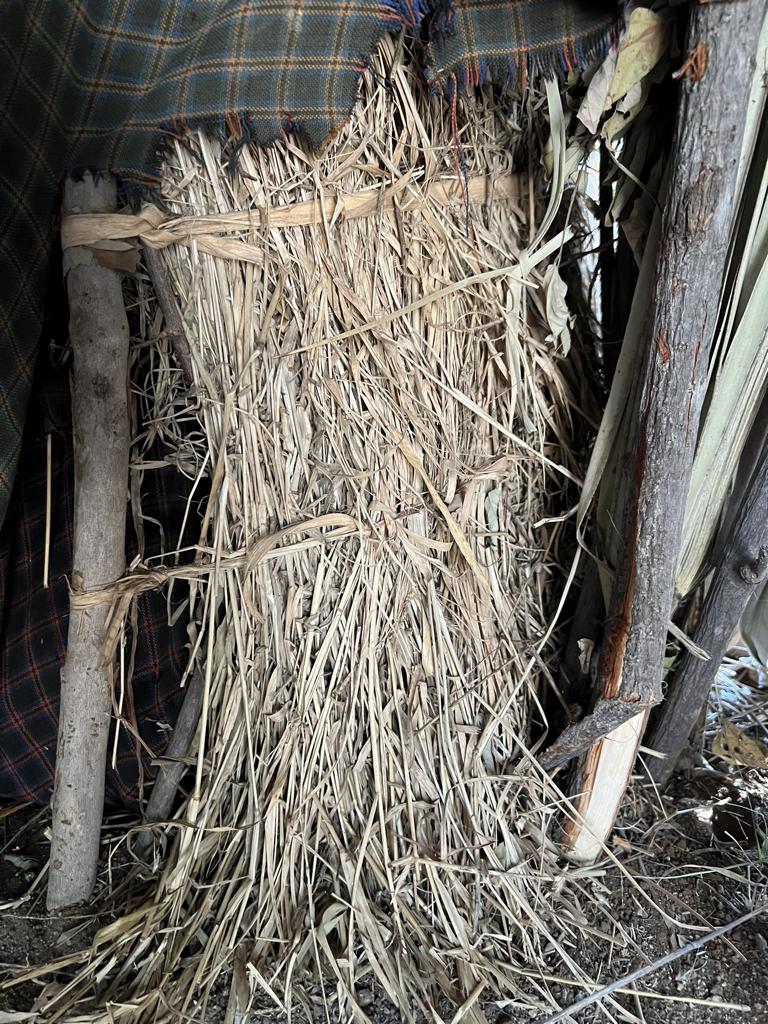
A grass wall and a blanket separate both areas. Both huts appear from the outside like one single hut; therefore, the term ‘hut structure’ is used.
How are the Hadza building their huts?
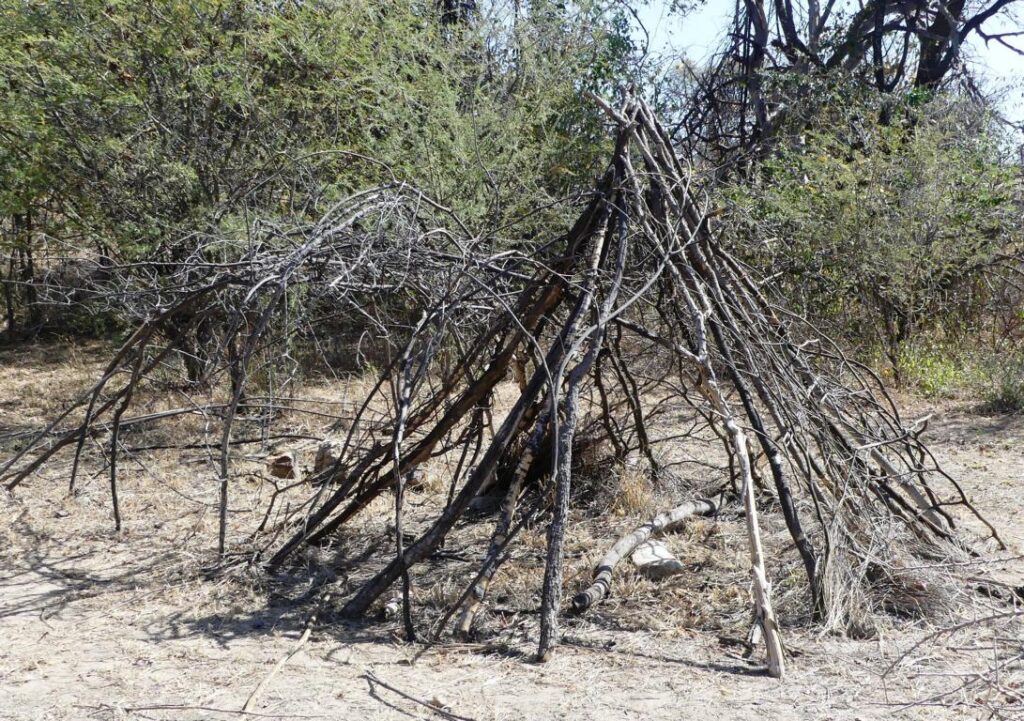
Whether the hut is conical or half-round, the building always starts with putting up the main frame poles. These poles will be reinforced and supplemented with side poles in the required shape. After that, horizontal saplings will be woven into the upright poles, forming a wooden frame lattice.

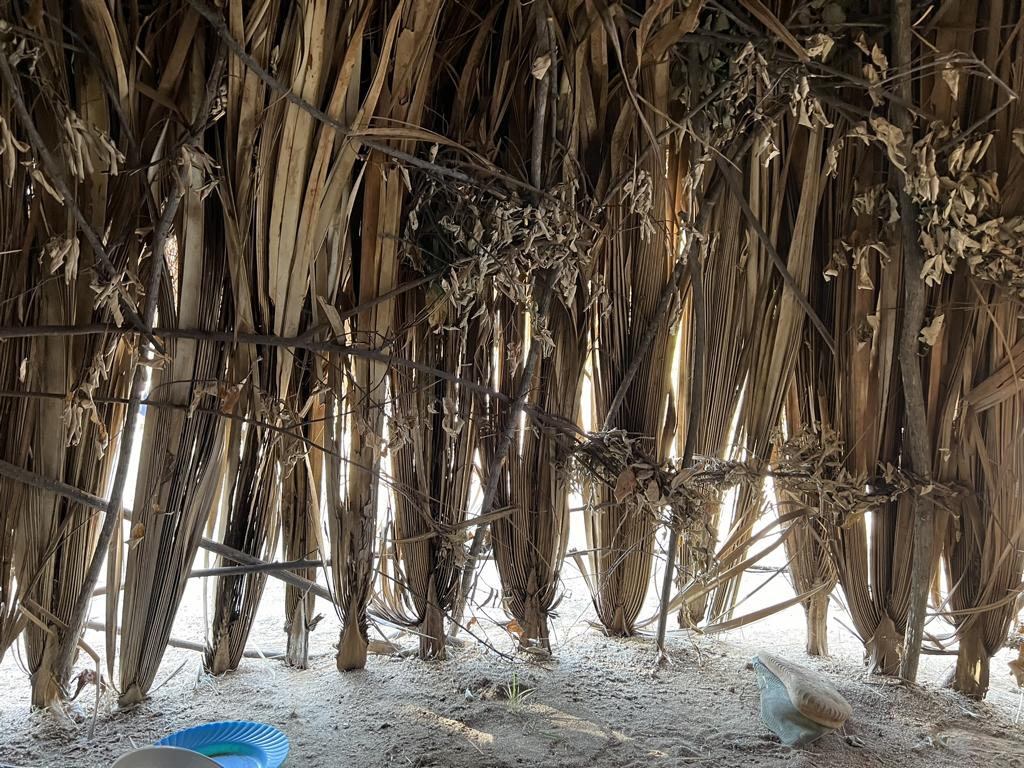
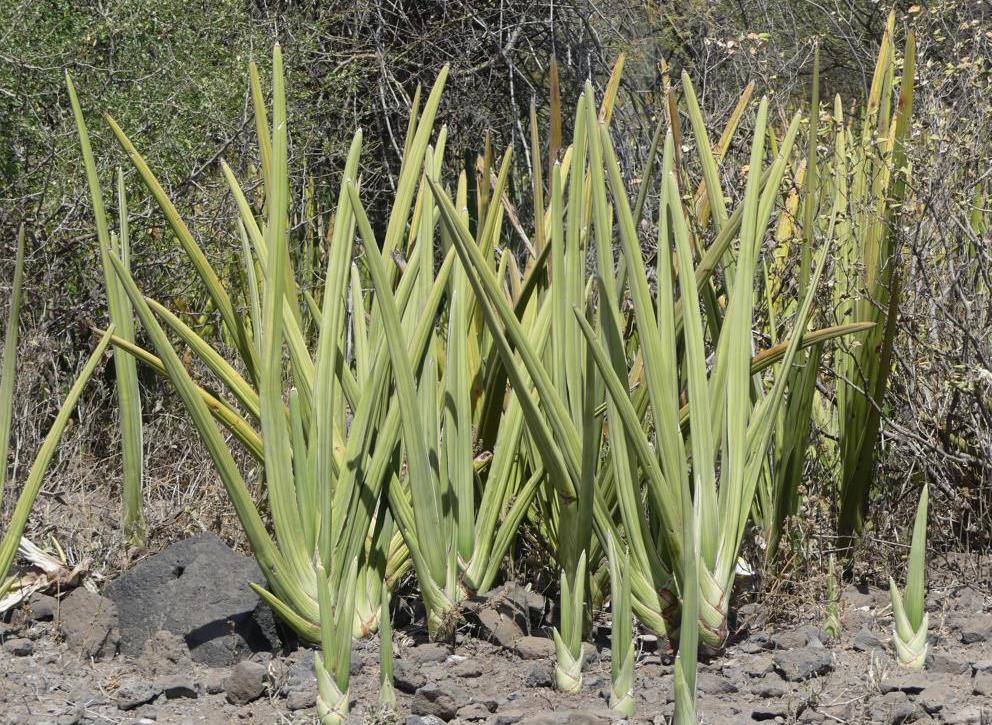
The bottom layer above the lattice will be upright-standing fan-palm fonds at the entrance hut. These fonds from the Borassus aethiopum palm will open space for ventilation on the bottom. However, palm fonds are only available in the surroundings of Lake Eyasi swamp. In areas far apart from that area, East African Wild Sisal (Sansevieria ehrenbergii) is often used for this bottom layer.
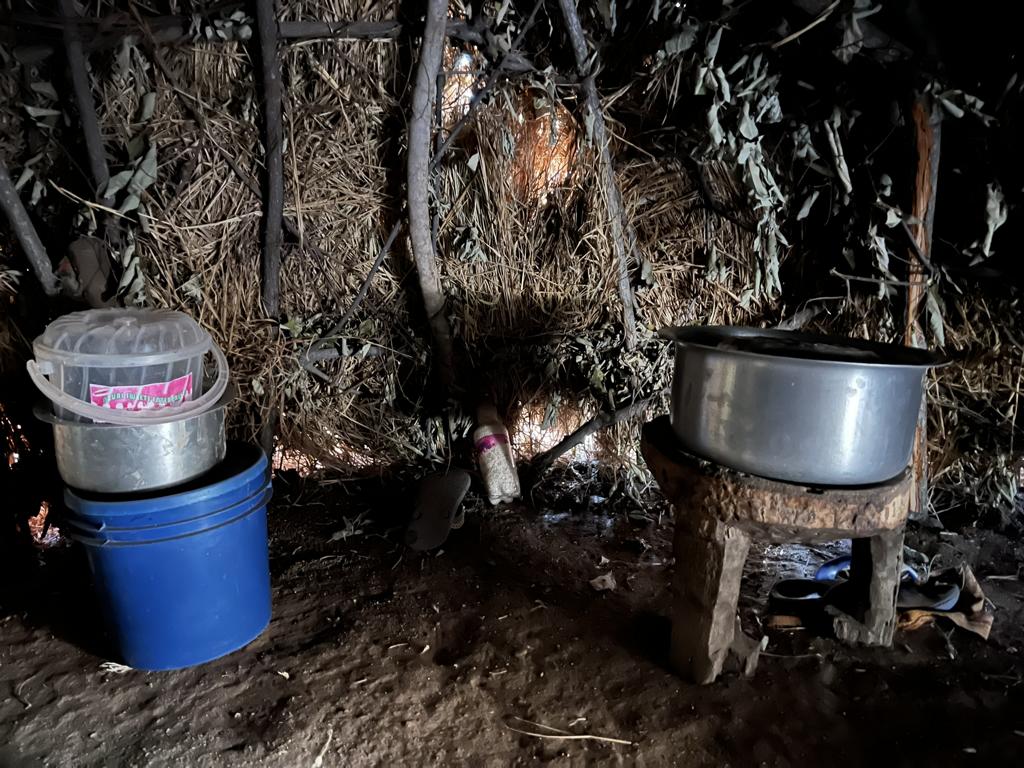
Normally, no fires are lit within the hut. A carved pot holder keeps the pot with outside cooked items from the ground.

The other layers above the palm fonds are heavily leafed tree branches. Above that, a thick layer of buffalo grass (Cenchrus ciliaris) will be placed. Strings of Grewia bark often keep the grass layers in place.
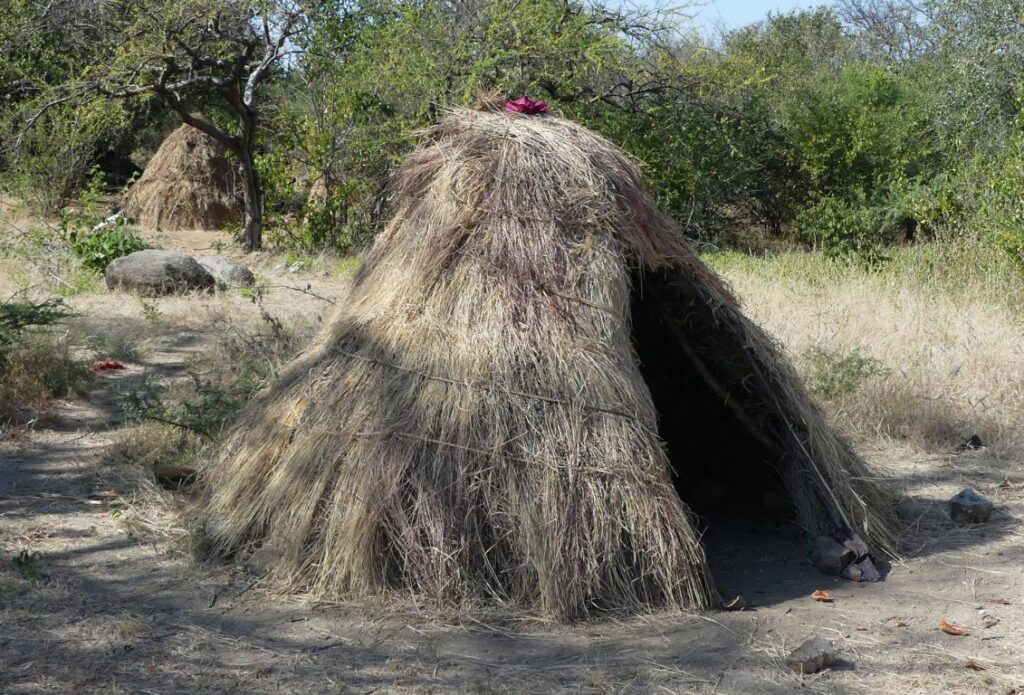
In the privacy hut behind the entrance hut, there is no bottom layer of palm fronds. All layers consist of leafed branches and grass.
Insecticide-treated mosquito nets for pregnant women
George W. Bush, the 43rd president of the USA, donated a mosquito net production line to the United Republic of Tanzania. Based on that, the ‘Tanzania National Voucher Scheme’ was introduced, a system for delivering insecticide-treated mosquito nets to pregnant women. This system has been functioning. Therefore, one can often find a mosquito net beside the Hadza grass hut structure.
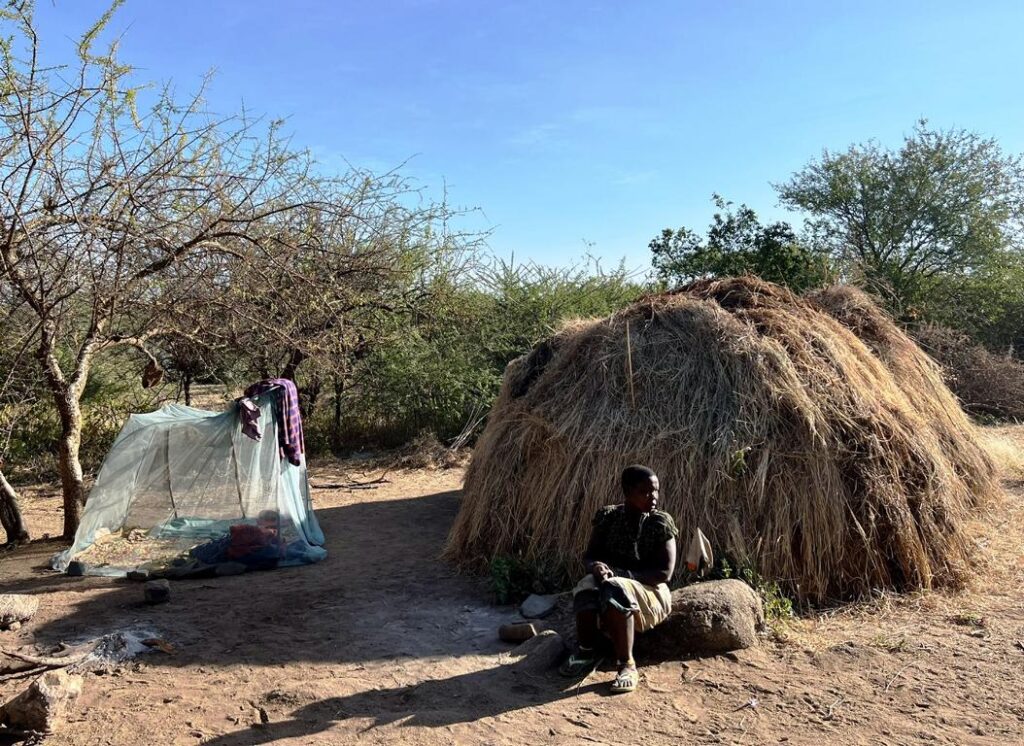
The voucher system works in such a way that ‘…Each woman must first attend an antenatal clinic, then be given a discount voucher, then use the voucher to buy a net, ensure that the purchased net is packaged with insecticide, use the insecticide to treat the new net, and, finally, reach the desired outcome of sleeping under the treated net…’ Statement taken from this source here.
Such mosquito nets perfectly fit the Hadza requirements. They are lightweight, protect women and children, and allow them to gaze at the stars before sleeping.
Burial then and now
Still in the generation before us, if old people felt it was time to leave this earth, they would inform their oldest son that they would not break camp at this turn but would remain at the old hut. Their son would give them a gourd with water and food and leave for a new campsite with his remaining family. After dying in the hut, predators would eat the corpses, most often Spotted hyenas. The hut would be left rotting, and no new hut would be built on this site anymore – at least as long as someone knew that somebody was dying there.
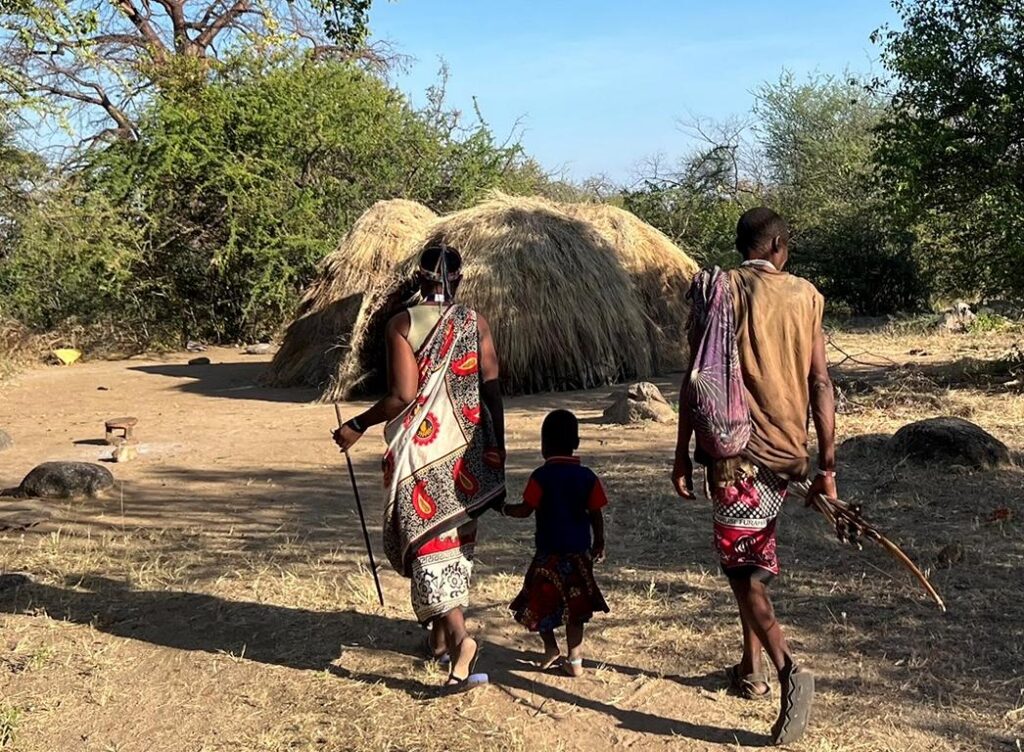
Nowadays (2024), most Hadza people are buried in the bush. But old people still insist on dying an honorable death – by being eaten up by hyenas or other predators in the old hut.
Modern huts of Hadza people
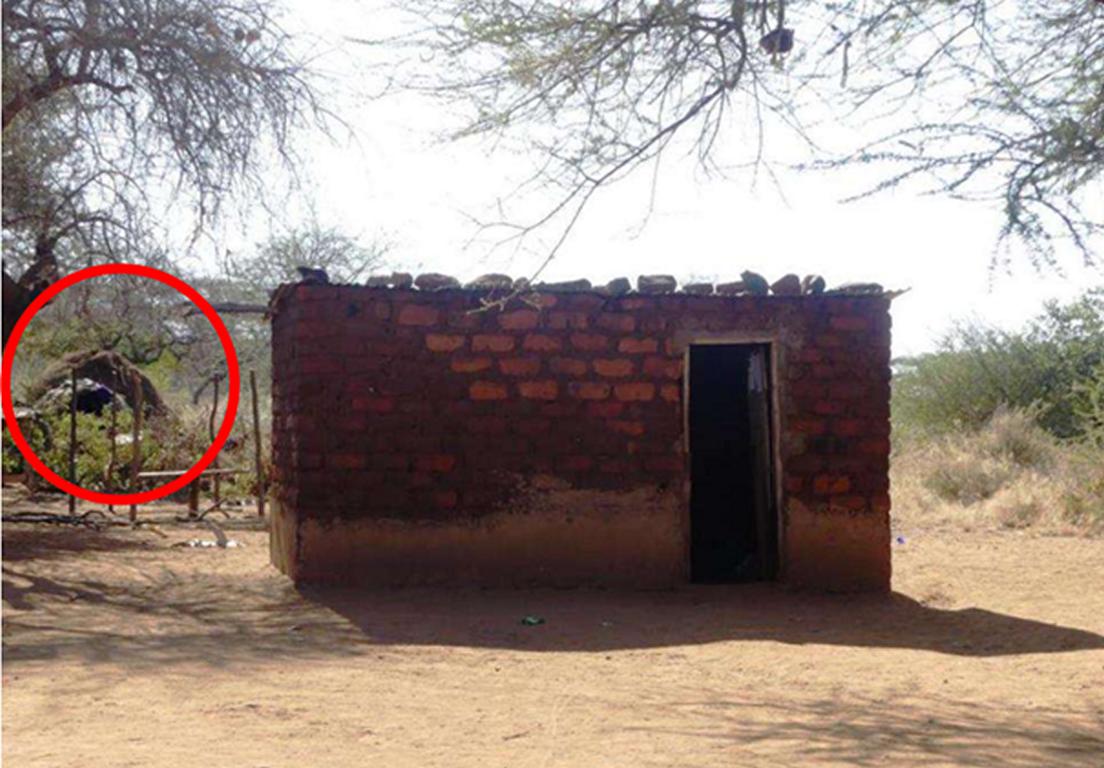
Hadzabe, living closer to villages with governmental infrastructure, like schools and hospitals, adopted modern ways of building huts. These are daub-and-wattle structures seen at Datoga, Iraqw, Sukuma people, or simple brick buildings. They often build a grass hut in the backyard, which reminds them of their previous life as hunters and gatherers. This is similar to Westerners who think they are still mammoth hunters when barbequing.
Lessons learned from traditional Hadza camps and huts:
- Hadza people like to sleep in the open and only use grass huts for protection against the weather and privacy.
- Buffalo grass is a perfect thatching material. But it is hard to find in the reduced areas the Hadza were pushed into.
- Fan palm fonds ensure good ventilation from the bottom of the huts.
- Modern, insecticide-treated mosquito nets make perfect sleeping places outside the huts for Hadza women and children.
- Hadza men sleeping unprotected in the bush do not regard hyenas as an imminent danger. That’s different from the experiences I gained in the southern parts of Africa.
Additional information
My book ‘Hadzabe Survival Skills‘ offers more skills, knowledge, tools, and techniques for the Hadzabe people’s life in their natural environment. It is available on Amazon.com and Amazon’s regional websites.
.

